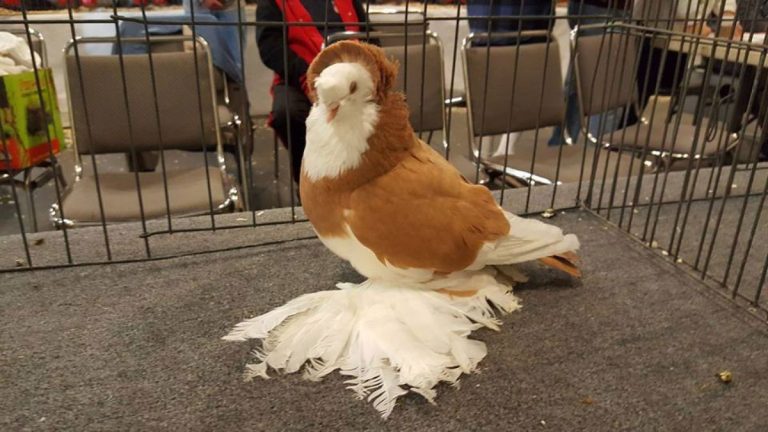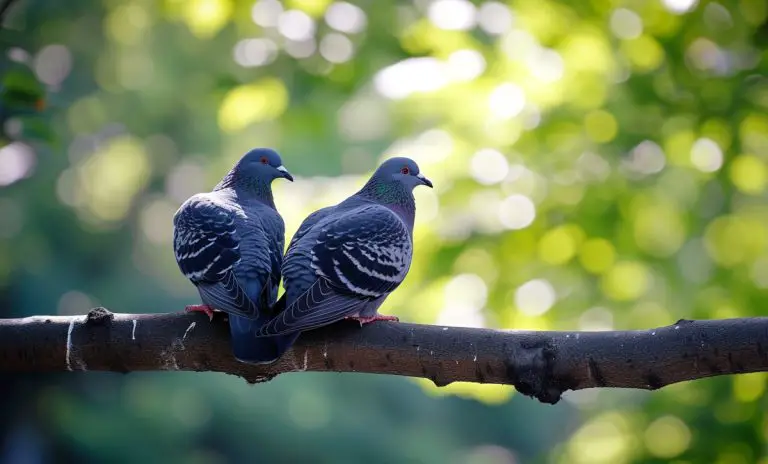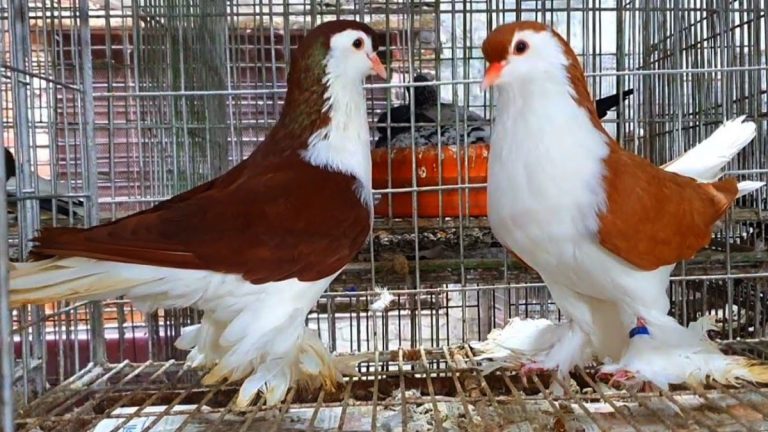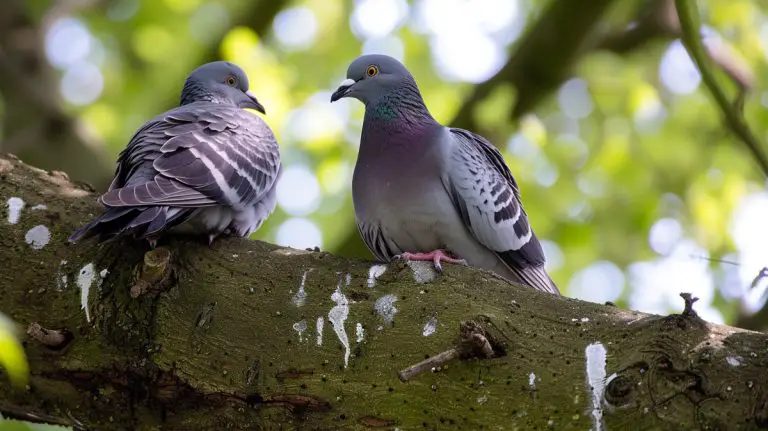How to Get Rid of Pigeons from Your Roof and Balcony: A Pigeon-Proofing Guide
Have pigeons invaded your roof and balcony, causing a lot of noise and mess? Rather than harming these birds, there are numerous steps you can take to deter them successfully.
So how to get rid of the pigeons from your roof and balcony? You can install physical barriers, such as netting, or use shiny objects like aluminum foil as visual deterrents. In addition, you can use ultra-sonic devices with high-frequency sounds, decoys, and taste-repellent sprays to prevent pigeons from gathering. Also, reducing access to food and shelter may prove to be a beneficial approach in this situation.
This guide offers the basics of pigeon-proofing and tips on how to stop them from returning.
5 Tips – How to Get Rid of Pigeons from Your Roof and Balcony
If you are looking to clear away pigeons and keep them away for good, these five tips will prove helpful in accomplishing your mission.
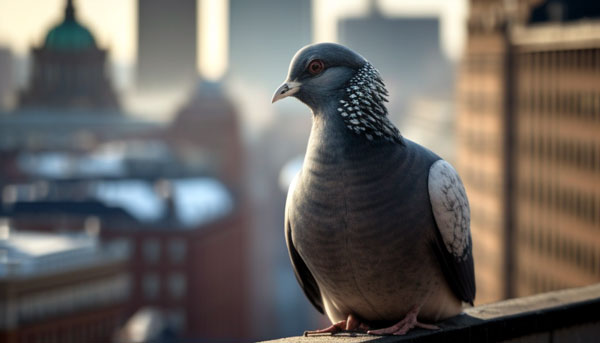
Physical barriers
You can install physical barriers such as bird spikes or netting to prevent pigeons from landing on surfaces. Here are some options to consider:
- Bird Spikes: Bird spikes are long, slender spikes that are installed on ledges and other flat surfaces where pigeons like to perch. The spikes make it impossible for pigeons to land or roost, so they are discouraged from returning to the area.
Look at this video on how spikes work on pigeons.
- Netting: Another effective solution is to cover your roof or balcony with bird netting. This fine mesh material is designed to keep birds out while still allowing light and air to flow through. The netting should be installed securely to prevent pigeons from finding a way through.
- Slopes: Installing a slope on ledges and other flat surfaces can also be effective in keeping pigeons away. The slope makes it difficult for pigeons to land and perch, so they will look for a more comfortable place to roost.
2. Decoys & Visual Deterrents
Visual deterrents are objects or devices that are designed to scare pigeons away from your property. These deterrents use the birds’ natural fear of predators to keep them from landing on your roof and balcony. Some of the most popular visual deterrents include:
- Fake Owls: Fake owls or hawks are probably the most commonly used visual deterrent for pigeons. These plastic or rubber decoys mimic the appearance of an owl, which is a natural predator of pigeons.
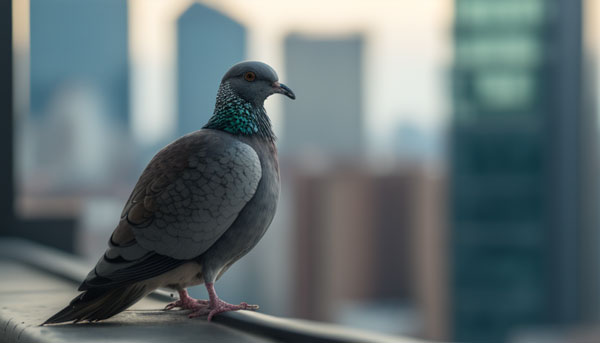
When placed on a roof or balcony, fake owls can scare pigeons away, as they believe that there is a real predator in the area.
- Reflective Tape: Reflective tape is another effective visual deterrent that can be used to get rid of pigeons. This tape is made of a highly reflective material that flashes in the sun to create a visual disturbance.
3. Sound deterrents
Sound deterrents use high-pitched sounds that are unpleasant to pigeons but inaudible to humans. These sounds are designed to discourage pigeons from roosting in your area. They can come in the form of electronic devices that emit sounds or audio recordings played on a loop.
When choosing a sound deterrent, it is important to select a device that is specifically designed for pigeons. Some devices marketed for birds in general may need to have the right frequency or intensity to deter pigeons effectively.
4. Repellent Sprays & Gels
Repellent sprays are a humane and safe way to keep pigeons away from roofs and balconies. These sprays are specially formulated to discourage birds from roosting or nesting in the area.
They contain a combination of natural ingredients that emit an unpleasant odor and taste, making pigeons want to avoid the area. Some of the most common ingredients in these sprays include capsaicin, citronella, and vinegar.
Gel repellants can be applied to ledges that pigeons tend to perch on in order to make the surface sticky, prompting them to avoid it. However, dust and debris reduce their effectiveness, and regular reapplication is required.

Accordingly, gel repellants are not suitable for use in areas frequented by smaller birds, as they can easily get trapped in the adhesive.
However, one of the benefits of using repellent sprays is that they are easy to apply. Simply spray the solution onto the surface you want to protect, and the pigeons will soon start to avoid the area.
5. Habitat modification
By modifying the habitat of pigeons, you can effectively reduce their presence on your roof and balcony. Pigeons are attracted to food, so if you have bird feeders or pet food on your property, it will attract pigeons.
Make sure to clean up any food that may have fallen on the ground and store pet food inside when it’s not being used. Also, reduce the availability of shelter for pigeons by trimming trees and bushes.
Why Pigeons Are a Problem
Pigeons are a common problem in many properties, causing many issues ranging from mere annoyance to serious health and safety concerns.

They Create Mess And Damage Property
One of the primary reasons pigeons are problematic is their tendency to leave large amounts of droppings on buildings and outdoor areas. That includes sidewalks, balconies, and window sills.
These droppings can not only create unsanitary conditions, but they also can cause damage to the property’s exterior, eroding masonry and leaving unsightly stains.
Another issue with pigeons is their tendency to create large and messy nests in eaves, ledges, and other protected areas. These nests can clog gutters and downspouts, causing water damage to the building and potentially creating fire hazards if the nest blocks vents or chimneys.
Loud Vocalizations
Pigeon vocalization is a topic that elicits strong opinions from people. Some may find the sound of pigeons cooing soothing and peaceful, while others may find it obnoxious and annoying. It is a subjective matter that depends on personal preference.

In urban areas, where pigeons are abundant, the sound of their cooing can become a constant background noise that can be bothersome to some individuals.
Pigeons are known for being active during the day and particularly noisy during mating season. This can lead to an increase in their vocalizations, which can make it difficult for people to concentrate or sleep.
Pigeons Pose A Health Risk
Moreover, pigeon droppings can be a health hazard, containing bacteria, fungi, and parasites that can cause respiratory and other infections in humans and animals. Pigeons are known carriers of diseases such as histoplasmosis, salmonella, and avian pox.
These can be transmitted to humans and pets through direct contact or by inhaling dust and other particles from contaminated areas. This makes them particularly problematic in areas with large populations, such as parks, downtown areas, and shopping centers.
Additionally, pigeons can carry ectoparasites, such as mites, ticks, and fleas, spreading diseases to humans. However, the risk of contracting these diseases from pigeons is relatively low. You can even reduce it further by getting rid of pigeons from your property.
Pigeons Attract Predators
Pigeons can attract predators such as hawks, falcons, and owls to your home. These birds of prey may come to the area to hunt the pigeons, and they may also prey on your pets and small animals like chickens.
No Single Method Will Solve All Pigeon Problems
Pigeons can be persistent when trying to roost in areas that are not desired, and this makes them hard to get rid of. It is important to note that no single method of getting rid of pigeons will completely solve the problem.
While some methods may work better for certain situations, there is no guaranteed way to ensure that pigeons are permanently gone from an area.
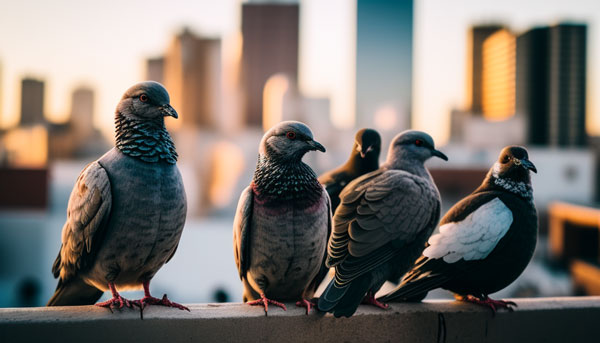
Pigeons are intelligent and adaptable birds that may find other ways to access your property if just one method is used. So, it is important to use these measures in combination for maximum effectiveness.
Does Killing The Pigeons Work?
Killing pigeons is not an acceptable solution to the problem of unwanted birds on your roof and balcony. It is not only inhumane, but it is also illegal in most parts of the world. In addition, killing a few birds will not solve your pigeon problem – other pigeons will simply replace them.
The best solution for getting rid of pesky pigeons is to make your property less attractive to them.
Why Do Pigeons Like Roofs And Balconies?
Pigeons have a natural affinity for elevated areas, including roofs and balconies. They are naturally drawn to high places because they provide a safe and secure environment to nest and roost from predators, such as hawks and eagles.

The flat surfaces of roofs and balconies also make it easy for pigeons to build their nests, which typically consist of sticks, twigs, and other materials. Also, they provide a better spot to look out for any possible predators that may lurk nearby.
Another reason why pigeons like roofs and balconies are that they offer a source of food and water. Pigeons are opportunistic feeders. They will take advantage of any food sources they can find.
If you’re tired of dealing with pigeons on your property, our articles on how to keep pigeons away can offer effective solutions. Our guide on how to keep pigeons away from windows provides practical tips for preventing pigeons from perching on windowsills and causing damage to your property. Additionally, if you’ve ever wondered why pigeons coo, our article on why do pigeons coo can help you understand their behavior and communication. With our help, you can keep your property pigeon-free and learn more about these fascinating birds.FAQs
We’ll answer some most frequently asked questions about how to get rid of pigeons from your roof and balcony.
You can install physical barriers or use deterrents, such as sound, scent, or decoys. Also, you can cut access to food and shelter. All these are humane methods to keep the birds away.
The scent of cinnamon, hot pepper juice, and other strong-smelling substances deters pigeons from roosting and nesting. Apply them on your roof and balconies to discourage the birds from staying in the area.
Apart from the ultrasonic devices, numerous alternative methods imitate the sounds of pigeons’ natural predators, such as hawks, owls, and falcons. It is a logical idea, as pigeons naturally fear raptors.
Conclusion
Physical barriers, deterrents, habitat modification, and decoys are humane ways to pigeon-proof your roof and balcony. Unlike pigeon culling, they do not cause any harm to the birds; they simply make the area unpleasant for them, so they choose to roost elsewhere.
Ultimately, the best approach will depend on the specific situation and the severity of the problem. However, combining these methods is wise since there’s no guaranteed pigeon-proof method. Pigeons are intelligent birds and may eventually find a way to overcome that one method you have put in place.


